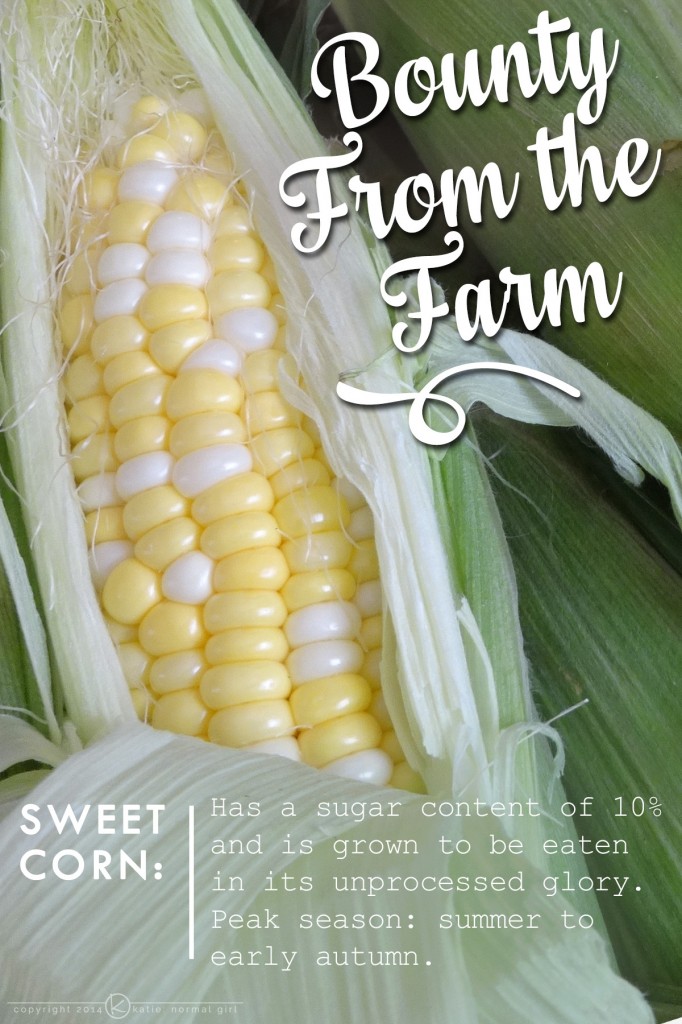While milling around my local farmer’s market last weekend I visited one of my favorite local farmers where I found a lovely pile of sweet corn. He had just harvested the corn earlier that morning so it was about as fresh as I could get without growing it myself! Armed with my bushel of corn, I decided that I just had to tell you about one of my favorite veggies: sweet corn.
Is all corn “sweet corn”?
Sweet corn has a higher sugar concentration than its counterparts, flint and dent corn and popcorn – all of which have a high-starch content. Flint and dent corns are typically grown with the intention of processing into corn meal and flour for many corn-based foods like tortilla chips, polenta and grits. Sweet corn is grown to be consumed as a whole kernel, whether cut from the cob, frozen or canned.
Is it ripe?
As soon as sweet corn is harvested, its sugars begin to breakdown, so the smaller you can make the farm-to-table gap, the better. Corn is ready for harvest (and eating) when the silks begin to turn brown but aren’t dry.
Peel the husk down a little bit; if the kernels go to the top and are plump (not dimpled) then you’ve got a fresh ear of corn. As a final test, puncture a kernel and if the juice is milky then you’ve got corn at its peak of freshness. Time to eat it!
If you’re ready to get cooking, this is (in my humble, corn-loving opinion) the easiest way to cook and shuck corn.

Just in case you didn’t know…
Husk – the green, leafy covering over your corn.
Silk – the stringy bits at the top of corn. Along with the husk, they are removed before eating the corn.
Shuck – the processes of removing the husk and silk from the corncob or just another word for peeling – you peel a banana; you shuck corn on the cob.
Ear of corn – refers to a single cob of corn, in or out of the husk.
Check out more from my Bounty From the Farm series.


Interesting post, Katie. Thank you.